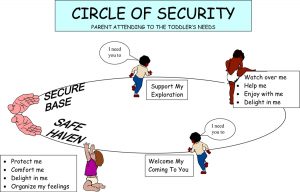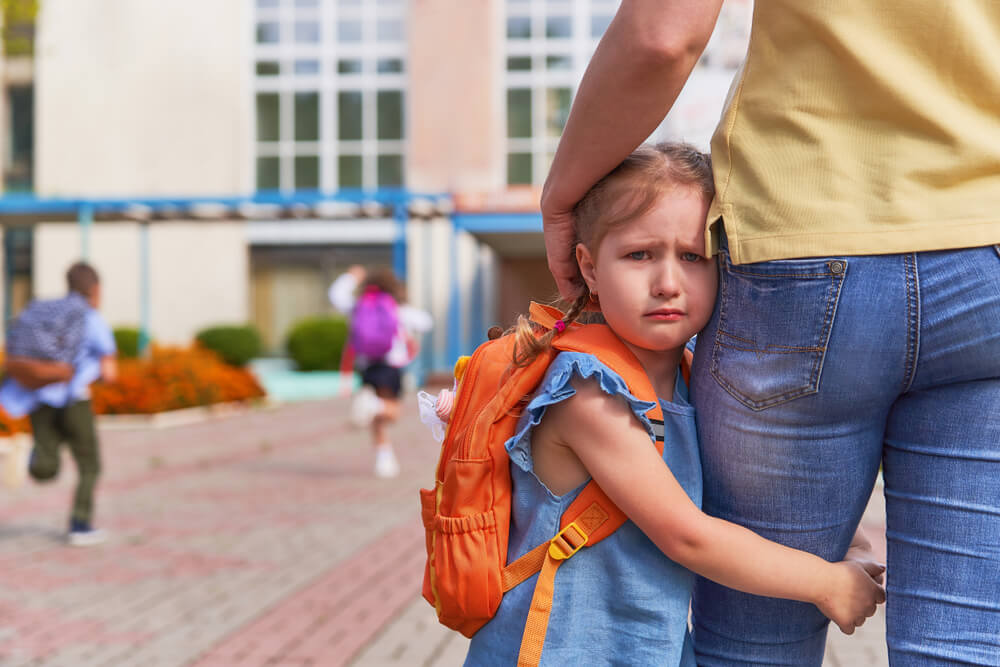By: Kira Davis
The “best interests of the child” has become the fundamental consideration in family courts.[1] In order to determine what is in the child’s “best interests” when deciding custody arrangements, courts consider multiple factors.[2] These factors include the child’s age, which party can continue to provide the child’s current routine, and which party is able to meet the child’s physical needs, among others.[3] However, the issue here is whether the courts determination of a child’s “best interest” also meets the child’s emotional needs. An individual’s ability to meet the child’s emotional needs is essential in determining custody.[4] To understand the impact that attachment theory could have in determining which adult is best suited to take care of a child, let’s first get an understanding of what exactly attachment theory is.
The basic principle of attachment theory “is that primary caregivers who are available and responsive to an infant’s needs allow the child to develop a sense of security.”[5] When the caregiver is responsive, the child understands that that person is dependable, and this understanding creates a “secure base” for the child to explore the world. [6] Research has shown that children who fail to form secure attachments early in life can be negatively impacted as they continue to develop.[7] On the contrary, people who become securely attached as children show signs of good self-esteem, create strong romantic relationships, and display the ability to self-disclose to others.[8]
In any family law courtroom, especially one in which the custody of a child is being disputed, there is much division and loss that occurs.[9] The most important loss at that time, is the loss of access to parents.[10] As discussed previously, the lack of the “secure base” in a child’s life can be detrimental to their development. This is because, when a caregiver has formed a parent-child attachment with a child, the caregiver becomes the child’s safe haven in times of stress.[11] When this safe haven is taken away, there is an attachment disruption which then can increase a child’s risk of behavioral problems, posttraumatic stress disorder, and disassociation.[12]
Ultimately, if we are to care about what is in a child’s best interest, “attachment theory simply cannot be subtracted from the equation.”[13] A significant issue with the current “best interests” approach is that it requires people to take on adversarial roles to show that they are better suited to take care of the child than the opposing party.[14] Attachment theory analysis assists the court in limiting this adversarial role and truly determining what will be the best for the child in the long term. “By considering the caregiver’s ability to respond appropriately to the child when making custody decisions, courts and policy makers can minimize the child’s anxiety and future ability to cope successfully with life.”[15]
While it is, of course, important that judges and jurors use their best judgment based on the facts of a case to determine what custody placement is in the best interests of the child, having a “secure base” and an emotional safe haven should be at the forefront of that consideration.[16] The lack of a clear sense of attachment with a caregiver who understands a child’s needs and actively attends to those needs, only creates lifelong challenges for a child. Attachment theory can begin to play a larger role in courtroom decisions if we “encourage attachment experts to refine and develop tools such as standardized observation techniques, projective measures, and training tools to help caseworkers recognize healthy attachment behaviors….”[17] Once these measures are taken, we will be able to better assess which party can truly give a child what they need to develop and make their mark on the world.
[1] How to Apply Attachment Theory in Family Courts: The World’s Leading Experts Weigh in, Child & Family Blog (January 2021), https://childandfamilyblog.com/global-collaboration-on-attachment-theory-in-family-court/.
[2] Jennifer Wolf, Child’s Best Interest in Custody Cases, Very Well Family (July 23, 2021), https://www.verywellfamily.com/best-interests-of-the-child-standard-overview-2997765
[3] Id.
[4] Susan D. Talley, Preserving Relationships: Ways Attachment Theory Can Inform Custody Decisions, 26 BYU J. of Pub. L. 245, 250 (2012).
[5] Kendra Cherry, What Is Attachment Theory? The Importance of Early Emotional Bonds, Very Well Mind (July 19, 2019), https://www.verywellmind.com/what-is-attachment-theory-2795337.
[6] Id.
[7] Id.
[8] Id.
[9] Talley, supra note 2, at 247.
[10] Id.
[11] Michelle R. Gros, Since You Brought It Up: Is Legally Separating a Child from a Nonbiological Third Party Who Has Essentially Become the Child’s Psychological Parent Really In the Best Interest of the Child?, 44 S.U.L. Rev. 367, 415 (2017).
[12] Id.
[13] Id. at 416.
[14] Talley, supra note 2, at 256.
[15] Id. at 250.
[16] Id. at 261.
[17] Id. at 262.
